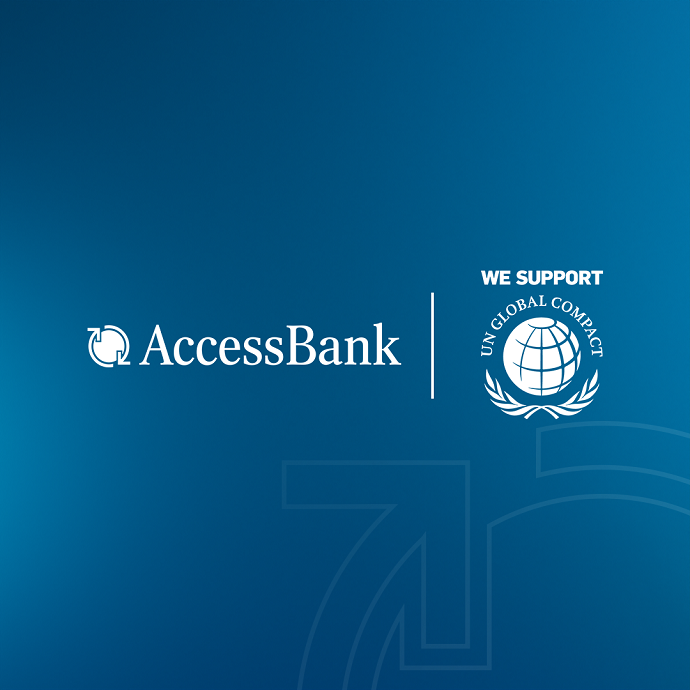|
|
TODAY.AZ / Business
BP: We are seeing Shah Deniz link Azerbaijan to Europe
28 January 2014 [12:18] - TODAY.AZ

By AzerNews
Caspian Center for Energy and Environment (CCEE) of ADA University interviews BP's Director of Eurasian Exploration Mr. Greg Riley.
Question: Mr. Riley, apparently as time passes, BP learns more about the geology of the Caspian in general and about specific fields in particular. How do you see ACG five years from now? Could there be surprises - positive or negative?
Answer: BP operates Azeri-Chirag-Deepawater Gunashli (ACG) which is a truly giant field - the largest oilfield in the Azerbaijan sector of the Caspian basin and one of the largest offshore oil fields in the world. We feel a deep sense of responsibility in operating this field on behalf of Azerbaijan and our partners. It is geologically challenging with a complicated seabed including slumps, mud volcanoes and steep scarp. With our global experience as operator of more than forty giant fields across the world, we strongly believe that optimization of the reservoir is closely linked with the use of technology in which we have expertise. This includes 4D life-of-field seismic, intelligent wells and complex completions with world-class gravel packs, and distributed temperature sensing to reduce costs and reduce intervention times.We believe that with the right production plans in place and the right technologies that we continue to bring to the Caspian integrated with the optimal reservoir depletion plans, ACG can go on for decades to benefit Azerbaijan, our partners and the region as a world-class resource.
Q.: How would you reflect on the current and potential natural gas volumes of ACG?
A.: ACG has remained a source of substantial gas supplies to the government of Azerbaijan for many years and it will continue to be so for decades. Under the production Sharing Agreement we partly reinject ACG associated gas to maintain pressure in the reservoir and the remaining part is delivered to the national grid system for domestic use. When we say associated gas we mean a few billion cubic metres per year. But this is only the existing production. For the future, ACG's Non Associated Gas (NAG) potential can be realised to make it an important gas producer. Our knowledge of the field has confirmed presence of large non-associated gas resources in the deeper horizons of ACG that can be developed in support of Azerbaijan's plans to expand its new supplier role. But this will require new agreements with the government and we have been working with SOCAR for some years to agree the terms of such agreements.
Q.: Could there be new developments about Shah Deniz beyond the second phase?
A.: Shah Deniz Stage 2 is a giant project on its own and this project will require a massive effort to deliver. With the plans to create a new gas development system that will include two new bridge-linked production platforms; 26 subsea wells to be drilled with two semi-submersible rigs; 500km of subsea pipelines built at up to 550m of water depth; it is going to be the first full-scale subsea project in the Caspian. However we believe Shah Deniz has a potential of development beyond our current plans. The appraisal and exploration wells, which we have drilled in the field, have discovered a new high pressure reservoir in a deeper structure below the currently producing reservoir. This means that by introducing new high-pressure technologies including those that have yet to be invented, Shah Deniz will have a full field development that will be extended to future phases. I personally strongly believe that Shah Deniz has a potential for a Stage 3 and even further developments. We will continue to work with SOCAR and our partners to continue our appraisals and assessments to underpin future plans for potential new stages beyond Stage 2.
Q.: How optimistic are you about Shafag-Asiman field, what would be a tentative timeline for it?
A.: We are very optimistic about Shafag-Asiman. This block, lying some 125km south-east of Baku and covering an area of about 1,100 square kilometres, has never been explored. Located in a deepwater section of about 650-800 metres, it has a reservoir depth of around 7,000 metres. In January 2012, we completed the planned 3D seismic acquisition on the Shafag-Asiman structure. This seismic survey was the first in the area and was conducted in line with our exploration plans as defined in the 2011 production sharing agreement between BP and SOCAR on joint exploration and development of the structure. Over the rest of 2012 and into 2013, data was being processed from what is believed to have been the largest 3D survey ever conducted in Azerbaijan waters. Some 18 months will be required in all for data interpretation and another year for planning of the first exploration well.
Q.: Are there any potential for new and significant oil and natural gas discoveries in Azerbaijan, offshore or onshore?
A.: We believe that the Caspian still has significant potential to be discovered. Globally, the future exploration trends say basically "go deeper, and look for more subtle, difficult to see traps", so new deepwater exploration and re-exploration of shallow waters are among the major trends. BP has huge experience in operating at the frontiers of geography and technology, and executing projects at a scale only a few companies can take on. This year we hosted a major event in Baku to present BP's global portfolio of technologies and the impact they are having, or could have if applied to the Caspian. These are technologies for which BP is either the best known or one of the longest-established users. These technologies allow us to conduct advanced seismic imaging and as a result to see new and exciting exploration opportunities
Q.: Beyond operating the two most important hydrocarbon projects of Azerbaijan, what have been the contributions of BP in general to this country? Can we talk of significant technology and knowhow transfer? Or, maybe something in terms of novel business practices?
A.: I already touched upon the technologies we are still bringing to the Caspian. I liked the "beyond petrol" interpretation for BP, and actually the effects of the work done by BP goes beyond oil and gas. BP has always seen a role for itself to play in developing Azerbaijan's specialised human resources to international standards. Since early days of our presence in the Caspian region we have made it one of our priorities to train and develop nationals so that they are capable of competing with international experts and taking over senior roles from world-class BP experts. To support the achievement of this goal together with our partners and SOCAR in particular, we have to date designed and implemented a number of unique training and development programmes. Today BP employs directly about 2,800 Azerbaijani nationals. In total, 84 percent of BP's permanent professionals in Azerbaijan are nationals and many of them are in very senior leadership positions. Last year we successfully launched the petrotechnical resource entry programme (PREP) - our new learning and development tool for national petrotechnical graduates. The aim of PREP is to help develop national petro-technical expertise that benefits both the industry and Azerbaijan. Lasting 11 months, it is overseen by internationally recognized experts and companies. In addition to PREP, BP itself and jointly with its co-venturers has to date developed and operated many other successful learning tools to help professional development of national technical and petrotechnical experts. These include the Caspian Technical Training Center (CTTC) located at the Sangachal Terminal, which to date has trained about 900 technicians, and BP's internal Challenge programme.
Our multi-million dollar support to the Qafqaz University in establishing new chemical and mechanical engineering departments with about 200 students already majoring in these disciplines, the world-class laboratories that we have presented to this university, BP and co-venturers' international standard Project Management School created at the Khazar University, and which has already trained 230 national experts, are just a few examples of BP and its partners' support for national educational development.
For many years together with our co-venturers we have also awarded scholarships and bursary awards to a large number bright Azerbaijani students studying at national and international universities. To date about 650 Azerbaijani petro-technical students have received our scholarships and bursary awards. Another commitment is to help local companies to increase their participation in BP-operated projects through enhancing their capabilities, developing their business and building relationship with their potential clients. In parallel with increasing our joint operations and projects expenditure in Azerbaijan, which totaled more than $1.6 billion last year, we continue our flagship enterprise development and training programme. Its goal is to identify local companies and help them to achieve international standards, enhance their competitiveness and increase local content in our projects.
Q.: What have been the most memorable personal aspects of your work in Azerbaijan since 1990s?
A.: I have been incredibly fortunate to witness up close the massive changes in Azerbaijan since the mid-1990s. Observing the growth in production at ACG and seeing how this oil capital is being converted into human capital literally overnight is an amazing thing to witness. I remember when we first discovered Shah Deniz having the understanding of the importance of this discovery to providing energy security to the people of Azerbaijan. And now here we are seeing Shah Deniz link Azerbaijan to Europe.
Q.: Any final words?
A.: Thank you for this opportunity and good luck with the Caspian Center for Energy and
Environment of ADA University - I wish you great success.
URL: http://www.today.az/news/business/130378.html
 Print version
Print version
Connect with us. Get latest news and updates.
See Also
- 19 April 2024 [19:39]
Azerbaijan, Britain to jointly train personnel to realise green energy transition - 19 April 2024 [19:03]
Azerbaijan notes increase in number of taxpayers - 19 April 2024 [18:44]
AERA and ERRA hold international workshop in Baku - 19 April 2024 [18:32]
Double taxation between Azerbaijan, Turkiye abolished - 19 April 2024 [17:42]
Azerbaijan's Central Bank, VISA explore ways for collaboration - 19 April 2024 [16:58]
Azerbaijan, Finland discuss preparations for COP29 - 19 April 2024 [16:00]
EBRD's increased investment in Azerbaijan: Vote of Confidence in Economic Growth - 19 April 2024 [15:03]
SOCAR and ACWA Power clinch agreement on Green Fertilizer project - 19 April 2024 [11:11]
Azerbaijani oil prices decline - 19 April 2024 [10:00]
Construction of Aghdara-Aghdam highway starts
Most Popular
 EU acknowledges strategic significance of Baku International Sea Trade Port in Middle Corridor
EU acknowledges strategic significance of Baku International Sea Trade Port in Middle Corridor
 Weapons & ammunition discovered in Khankendi
Weapons & ammunition discovered in Khankendi
 South Korea conducts live-fire exercises near borders of DPRK
South Korea conducts live-fire exercises near borders of DPRK
 Navigating challenges in Azerbaijan's trade turnover amidst global uncertainties
Navigating challenges in Azerbaijan's trade turnover amidst global uncertainties
 TikTok closed in Kyrgyzstan
TikTok closed in Kyrgyzstan
 Azerbaijan's AccessBank joins UN Global Compact
Azerbaijan's AccessBank joins UN Global Compact
 Rising fuel expenses signals economic challenges for Azerbaijan
Rising fuel expenses signals economic challenges for Azerbaijan
